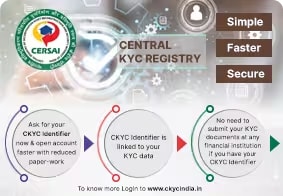Zero Charges on 28 Commonly Used Savings Account Services
- About Us
- MD & CEO letter about the bank
- MD & CEO
- Our History
- Letter to Shareholders on the 1st Annual Report after Merger
- Letter to Shareholders on the 2nd Annual Report after Merger
- Letter to Shareholders on the 3rd Annual Report after Merger
- Letter to Shareholders on the 4th Annual Report after Merger
- Board of Directors
- Awards & Accolades
- News Room
- Investors
- Careers
- ESG
-
Customer care hotlineCall 1800 10 888
-
As per amendment in the Income Tax Rules, PAN or Aadhaar are to be mandatorily quoted for cash deposit or withdrawal aggregating to Rupees twenty lakhs or more in a FY. Please update your PAN or Aadhaar. Kindly reach out to the Bank’s contact center on 1800 10 888 or visit the nearest IDFC FIRST Bank branch for further queries.
-
-
FinFIRST Blogs
The Liberalised Remittance Scheme helps citizens and investors send and invest money overseas
Remitting funds overseas to your children for education or to family members or friends in emergencies was relatively complicated and difficult as a process until the Reserve Bank of India (RBI) created Liberalised Remittance Scheme (LRS) in 2004. The scheme streamlined overseas payments and was made available for all resident individuals in India. Before we get into the details of the scheme, let us get an in-depth understanding of the scheme.
What is LRS?
The Liberalised Remittance Scheme (LRS) allows parents to transfer money to their children studying abroad. Any Indian resident can participate in it and transfer up to $250,000 abroad in a financial year. Authorised dealers, such as banks, enable such transactions between residents and their overseas dependents, using only your PAN card for verification.
Besides remittances, LRS can also offer foreign exchange services to Indian citizens for medical expenses or travelling. However, corporates, partnership firms, HUFs, and charitable trusts are not eligible to use the LRS.
What is the LRS limit?
The LRS limit has been updated many times. The current remittance limit is $250,000. There are no limitations on the number of transactions that can be made, although the value of foreign exchange transactions must not exceed $250,000.
How does LRS work?
Any person who is an Indian citizen may send money under the LRS scheme. It includes minors, although they must submit the guardian's countersignature in the LRS declaration form.
Family members have the option of consolidating remittances under the LRS. The condition, however, is that every family member must adhere to the scheme's terms and conditions. Clubbing by other family members is not permitted for capital account operations, such as opening a bank account or making investments, if these family members are not co-partners or co-owners of the foreign bank account, investment, or property.
Also, under the LRS, a resident cannot offer a gift in an international currency for another resident's international currency account kept outside India.
What is the LRS limit?
The LRS limit has been updated many times. The current remittance limit is $250,000. There are no limitations on the number of transactions that can be made, although the value of foreign exchange transactions must not exceed $250,000.
How does LRS work?
Any person who is an Indian citizen may send money under the LRS scheme. It includes minors, although they must submit the guardian's countersignature in the LRS declaration form.
Family members have the option of consolidating remittances under the LRS. The condition, however, is that every family member must adhere to the scheme's terms and conditions. Clubbing by other family members is not permitted for capital account operations, such as opening a bank account or making investments, if these family members are not co-partners or co-owners of the foreign bank account, investment, or property.
Also, under the LRS, a resident cannot offer a gift in an international currency for another resident's international currency account kept outside India.
It is also worth noting that remittances can be handled in an easily convertible foreign currency and need not be in US Dollars.
Things to know about the LRS scheme
There are a few things that you must remember when using the LRS scheme. They include:
1. LRS and currency
You must convert the Indian Rupee into US Dollars before making an international transaction to invest or spend overseas. The Liberalised Remittance Scheme covers the rules that govern such transactions.
2. Account transactions
You must check with the foreign exchange bureau to know if you can use the LRS for international trips and other reasons. Indian citizens usually have access to a forex facility along with LRS.
3. Repatriation
If investors have purchased shares and invested in mutual fund schemes in another country, the LRS regulations allow them to reinvest the money received in that nation, unless it is international direct investment. Investors do not have to repatriate the interest or profits earned on foreign deposits and investments.
4. Capital account transactions
The permitted capital account transactions within the LRS include:
- Opening, holding, and keeping a foreign currency account with a bank in another country.
- Purchase of real estate in another country.
- Investing in overseas stocks, treasury bonds, mutual funds, private equity funds, and other securities.
- Giving loans to relatives of non-resident Indians as defined by the Companies Act.
- Creating a Wholly Owned Subsidiary (WOS) or a Joint Venture (JV) outside of India for any legitimate commercial purpose, subject to the Overseas Direct Investments (ODI) requirements.
The LRS was a step in the right direction. It eases the process of sending money overseas for parents and allows Indian citizens to utilise opportunities in the foreign markets. While there is a $250,000 limit in remittances in a financial year, there are no limitations on the volume of transactions. Click here to use IDFC FIRST Bank’s outward remittance service.
Disclaimer
The contents of this article/infographic/picture/video are meant solely for information purposes. The contents are generic in nature and for informational purposes only. It is not a substitute for specific advice in your own circumstances. The information is subject to updation, completion, revision, verification and amendment and the same may change materially. The information is not intended for distribution or use by any person in any jurisdiction where such distribution or use would be contrary to law or regulation or would subject IDFC FIRST Bank or its affiliates to any licensing or registration requirements. IDFC FIRST Bank shall not be responsible for any direct/indirect loss or liability incurred by the reader for taking any financial decisions based on the contents and information mentioned. Please consult your financial advisor before making any financial decision.
The features, benefits and offers mentioned in the article are applicable as on the day of publication of this blog and is subject to change without notice. The contents herein are also subject to other product specific terms and conditions and any third party terms and conditions, as applicable. Please refer our website www.idfcfirstbank.com for latest updates.


 What's special about us
What's special about us




















